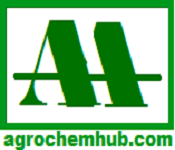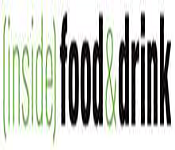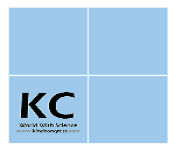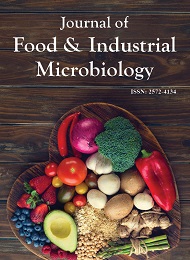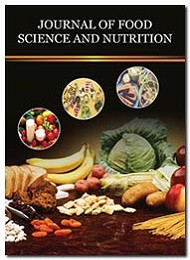Theme: Investigating the Interrelationships of Food and Human Health
Food Chemistry Congress 2022
- European Food Chemistry Congress
- Sessions/Tracks
- About Conference
- Market Analysis
- Past Conference Report
- VISA-TripAdvisor
May 25 - May 26, 2022 | Montreal, Canada
Conference Series LLC Ltd welcomes you to attend the 3rdEuropean Food Chemistry Congress to be held in Montreal, Canada on May 25 - May 26, 2022. The theme for the conference this year is Investigating the Interrelationships of Food and Human Health.
Details of Food Chemistry Congress 2021 in Canada
| Conference Name | Place | Date |
|---|---|---|
| Food Chemistry Congress 2022 | Montreal, Canada | May 25-26, 2022 |
Track 1: Food Chemistry
It is the study of chemical processes and interactions of all biological and non-biological components of foods. Food Chemistry is concerned with analytical, biochemical, chemical, physical, nutritional, and toxicological aspects of foods and food ingredients. It also involves the study and development of food additives that can be used to preserve the food. It overlaps with biochemistry in that it deals with the food components. Food chemistry can be applied in the analysis of dietary content to monitor or improve nutrition, or the determination of levels of contaminants to ensure Food Safety.
Related societies:
Association, Europe; Australian Institute of Food Science and Technology, Australia; Agricultural and Food Chemistry - American Chemical Society USA,Canada; Applied Food Technologies ,USA; German Institute of Food Technologies ,Germany; Institute of Food Technologists ,USA; International Association of Engineering and Food USA; Agricultural and Food Chemistry - American Chemical Society, USA;Agriculture and Agra-Food, Canada.
Track 2: Food and Nutrition
Nutrition begins with food components. It is the process by which the body nourishes itself by transforming food into energy and body tissues. The science of nutrition concerns everything the body does with food to carry on its functions. Food provides essential substances called nutrients. The body needs these nutrients to help it make energy; to grow, to develop, repair, and maintain its tissues, and to keep its different systems working smoothly. It is the science that interprets the interaction of nutrients and other substances in food.
Related societies:
Guelph Food Technology Centre, Canada; North American Meat Processors Association, USA; Processed Vegetable Growers' Association, UK; European Federation of Food Science and Technology, Netherlands; Food Science and Technology Abstracts, UK; Australian Institute of Food Science and Technology, Australia; International Union of Food Science and Technology, Canada; Applied Food Technologies ,USA; German Institute of Food Technologies ,Germany; Institute of Food Technologists ,USA.
Track 3: Food Science and Technology
Food Science and Technology involves the application of basic sciences and engineering to study the physical, chemical, and biochemical nature of foods and the principles of food processing. Whereas Food Technology deals with the production processing that makes the food. Food technologists apply their knowledge of food science to operate, design and manage the facilities and equipment involved in the processing and storage of foods.
Related societies:
European Snacks Association, Europe; Australian Institute of Food Science and Technology, Australia; Agricultural and Food Chemistry - American Chemical Society USA,Canada; Applied Food Technologies,USA; Applied Food Technologies ,USA; German Institute of Food Technologies ,Germany; Institute of Food Technologists ,USA.
Track 4: Food Engineering
Food Designing is a multidisciplinary field includes an extensive variety of exercises, for example, Food Handling, nourishment hardware, bundling, fixing assembling, instrumentation, and control. It includes the idea of comprehension of thermodynamics, response energy, and transport wonders connected to nourishment forms .It additionally to utilize present day devices, innovation, and learning, for example, computational materials science and nanotechnology, to grow new items and procedures. New bundling materials and procedures are being created to give more assurance to nourishments, and novel safeguarding innovation is developing.
Related societies:
Agricultural and Food Chemistry - American Chemical Society USA; Food Drink, Europe; European Federation of Food Science and Technology, Netherlands; German Institute of Food Technologies ,Germany; Institute of Food Technologists ,USA; International Association of Engineering and Food USA; Agricultural and Food Chemistry - American Chemical Society, USA;Agriculture and Agra-Food, Canada.
Track 5: Hydrocolloids in Food Industry
Food Hydrocolloids are gums that are added to food stuffs with a specific end goal to control their useful properties, for example, thickening or gelling. These are typically disengaged from plants. Hydrocolloids are utilized as a part of specialized and managed applications to thicken and to settle plans. In handled nourishments, they are pervasive – no other gathering of fixings contributes more to thickness, surface, and body like hydrocolloids do.
Related societies:
European Snacks Association,Europe;Australian Institute of Food Science and Technology, Australia; Agricultural and Food Chemistry - American Chemical Society USA,Canada; Applied Food Technologies,USA; German Institute of Food Technologies,Germany; Institute of Food Technologists ,USA; International Association of Engineering and Food USA; Agricultural and Food Chemistry - American Chemical Society, USA;Agriculture and Agra-Food, Canada.
Track 6: Food Processing
Food processing includes various methods and techniques used to transform the raw ingredients for the purpose of human consumption. The Food Processing can be done by physical means or chemical means. It typically involves activities such as mincing, macerating, liquefaction, emulsification Innovation in Food Production, processing and new product development can offer benefits for consumers and the environment. Usually food can be processed by three methods on-off production, batch production, mass production. Processing of food enables the removal of toxins, ease in marketing and distribution tasks. It also enables transportation of delicate perishable foods across long distances and makes many kinds of foods safe to eat by de-activating spoilage and pathogenic micro-organisms.
Related societies:
Agricultural and Food Chemistry - American Chemical Society USA; Food Drink, Europe; European Federation of Food Science and Technology, Netherlands; German Institute of Food Technologies ,Germany; Institute of Food Technologists ,USA; International Association of Engineering and Food USA; Agricultural and Food Chemistry - American Chemical Society, USA;Agriculture and Agra-Food, Canada.
Track 7: Food Rheology
Food Rheology is the study of properties of food components. It is concerned with the deformation and flow of the raw materials, intermediate and final products of food industry. Food components can be classified according to its rheological state such as solid, gel emulsion, liquid. The most important factor in food rheology is consumer perception of the product. The importance of rheology in food components means that is essential for food scientists to have analytical techniques to measure the properties.
Related societies:
Guelph Food Technology Centre, Canada; North American Meat Processors Association,USA;Processed Vegetable Growers' Association, UK; European Federation of Food Science and Technology, Netherlands; Food Science and Technology Abstracts, UK; Australian Institute of Food Science and Technology, Australia;International Union of Food Science and Technology,Canada;Applied Food Technologies ,USA; German Institute of Food Technologies ,Germany; Institute of Food Technologists ,USA.
Track 8: Food Microbiology
Microorganisms are generally considered to include bacteria, yeasts, fungi and some protozoa. Bacteria especially, but also yeasts and fungi, are ubiquitous. Different species of bacteria are found growing in all natural and man-made environments – from the Antarctic, through refrigeration at 1–5â—¦C, hot springs at the boiling point of water (100â—¦C) to hypothermal vents where high pressure allows growth at 160â—¦C and even higher temperatures found deep in the ocean floor. Microorganisms important to the Food Industry, including viruses, bacteria, yeasts, protozoa and worms. Microbial growth is examined and methods of measurement are discussed. The bacterial agents of food borne illness are described, including Clostridium Botulinium.
Related societies:
Food Science and Technology, UK; Australian Institute of Food Science and Technology, Australia; International Union of Food Science and Technology,Canada; Applied Food Technologies ,USA; German Institute of Food Technologies ,Germany; Institute of Food Technologists ,USA; ;Applied Food Technologies ,USA; German Institute of Food Technologies ,Germany; Institute of Food Technologists ,USA.
Track 9: Food Physical Chemistry
Food Physical Chemistry is the branch of Food Chemistry which involves the physiochemical principles of the reactions and conversions that occur during the manufacture, handling, and storage of foods. . Physical properties of food play a key role altogether fields wherever trendy technological processes are applied for the generation of food raw materials and therefore the production of food. The determination of physical properties of food and connected product are a pre-requisite for designing, production engineering and automation processes in today’s Food Pharmaceuticals and cosmetics industries furthermore as altogether connected internal control activities.
Related societies:
Guelph Food Technology Centre, Canada; North American Meat Processors Association , USA; Processed Vegetable Growers' Association, UK; European Federation of Food Science and Technology, Netherlands; Food Science and Technology Abstracts, UK; Australian Institute of Food Science and Technology, Australia; International Union of Food Science and Technology ,Canada; Applied Food Technologies ,USA; German Institute of Food Technologies ,Germany; Institute of Food Technologists ,USA.
Track 10: Food Toxicology
Food Toxicology is an individual field that assesses the impacts of constituents of the mind boggling compound network of the eating regimen on the exercises of harmful specialists that might be common endogenous items or might be presented from polluting creatures or from sustenance generation, handling, and arrangement. Food Toxocology is increases crucial consideration as nourishment production network is ending up more worldwide in beginning and any tainting or poisonous indication may cause serious antagonistic wellbeing impact. It covers the various aspects of Food Safety and Toxicology.
Related societies:
International Union of Food Science and Technology ,Canada; Applied Food Technologies ,USA; German Institute of Food Technologies ,Germany; Institute of Food Technologists ,USA; North American Meat Processors Association , USA; Processed Vegetable Growers' Association, UK; European Federation of Food Science and Technology, Netherlands; Food Science and Technology Abstracts, UK.
Track 11: Food Nanotechnology
Food Nanotechnology is a zone of rising interest and opens up an entire universe of new conceivable outcomes for the sustenance business. Nanotechnology involves the manipulation of microscopic matter that ranges from 1 to 100 nm in size. Because food and water are naturally made up of particles that are on the nanometer scale, engineered nanoparticles are able to penetrate these products easily based on their similar properties. These particles can act as a whole unit by performing similar transportation functions that prove useful in almost every industry, particularly involving Food Products.
Related societies:
International Union of Food Science and Technology ,Canada; Applied Food Technologies ,USA; German Institute of Food Technologies ,Germany; Institute of Food Technologists ,USA; North American Meat Processors Association , USA; Processed Vegetable Growers' Association, UK; European Federation of Food Science and Technology, Netherlands; Food Science and Technology Abstracts, UK.
Track 12: Food Analysis
Food Examination the prepare dealing with the headway, application and examination of indicative techniques for portraying the properties of substances and their constituents. Nourishment things are explored for a collection of reasons, e.g., consistence with legitimate and naming necessities, assessment of thing quality, affirmation of nutritive regard, area of contamination, inventive work. Food Investigation takes a gander at the tangible, synthetic, microbiological and physical properties of sustenance and drink, and is an essential piece of value confirmation, administrative consistence and item improvement.
Related societies:
International Union of Food Science and Technology ,Canada; Applied Food Technologies ,USA; German Institute of Food Technologies ,Germany; Institute of Food Technologists ,USA; North American Meat Processors Association , USA; Processed Vegetable Growers' Association, UK; European Federation of Food Science and Technology, Netherlands; Food Science and Technology Abstracts, UK.
Track 13: Food Waste and Recycling
Food Recycling is the process to change food waste materials into new useful products to prevent waste of potentially useful materials. The main use of recycling process is to reduce consumption of fresh raw materials and also reduce the energy usage and reduce air pollution and also reduce water pollution. Composting is also one of the methods to prevent food wastage. By using composting, we can convert waste Food Materials into organic matter which is useful as a medium to growing plants.
Related societies:
European Snacks Association ,Europe; Australian Institute of Food Science and Technology, Australia; Agricultural and Food Chemistry - American Chemical Society USA, ,Canada; Applied Food Technologies ,USA; German Institute of Food Technologies ,Germany; Institute of Food Technologists ,USA, International Association of Engineering and Food USA; Agricultural and Food Chemistry - American Chemical Society, USA.Agriculture and Agra-Food, Canada.
Track 14: Food Adulteration
Food Contamination is the procedure in which the nature of nourishment is brought down either by the expansion of substandard quality material or by extraction of important fixing. It not just incorporates the deliberate expansion or substitution of the substances yet natural and compound tainting amid the time of development, stockpiling, preparing, transport and circulation of the sustenance items, is likewise in charge of the bringing down or corruption of the nature of Food Substances . Adulterants are those substances which are utilized for making the nourishment items perilous for human utilization.
Related societies:
Guelph Food Technology Centre, Canada; North American Meat Processors Association , USA; Processed Vegetable Growers' Association, UK; European Federation of Food Science and Technology, Netherlands; Food Science and Technology Abstracts, UK; Australian Institute of Food Science and Technology, Australia; International Union of Food Science and Technology ,Canada; Applied Food Technologies ,USA; German Institute of Food Technologies ,Germany; Institute of Food Technologists ,USA.
Track 15: Food Authenticity and Integrity
Food Authenticity and Integrity refers to the genuineness and intactness of food products. Food fraud is a major concern not only for consumers, but also for producers and distributors. . The food supply chain network has become very extensive, which increased its susceptibility to fraud. Today’s food products and ingredients may be sourced from a single farm or from producers and manufacturers worldwide. Labeling regulations exist to verify authenticity and origins of these products as they are exported around the globe. Regrettably, recurring Food Contamination scandals show that there is always room for error, whether intentional, adulterated, or fraudulent.
Related societies:
European Snacks Association ,Europe; Australian Institute of Food Science and Technology, Australia; Agricultural and Food Chemistry - American Chemical Society USA, ,Canada; Applied Food Technologies ,USA; ; Applied Food Technologies ,USA; German Institute of Food Technologies ,Germany; Institute of Food Technologists ,USA; Guelph Food Technology Centre, Canada; North American Meat Processors Association , USA .
Track 16: Food Security
Food Security is a condition in which all individuals, consistently, have physical, social and monetary access to adequate sheltered and Nutritious Nourishment that meets their dietary and sustenance inclinations for a dynamic and sound life. Sustenance security fuses a measure of versatility to future interruption or inaccessibility of basic nourishment supply because of different hazard factors including dry seasons, shipping disturbances, fuel deficiencies, monetary flimsiness, and wars.
Related societies:
European Snacks Association ,Europe; Australian Institute of Food Science and Technology, Australia; Agricultural and Food Chemistry - American Chemical Society USA, Canada; Applied Food Technologies ,USA; German Institute of Food Technologies ,Germany; Institute of Food Technologists ,USA, International Association of Engineering and Food USA; Agricultural and Food Chemistry - American Chemical Society, USA.Agriculture and Agra-Food, Canada.
Track 17: Advanced Food Processing Technologies
Food Handling innovations are a basic connection in the natural way of life. Shoppers' interest for expanded quality guidelines has impelled the look for new and less forceful handling advancements', which allow more prominent maintenance of normal taste. As a result, negligible preparing procedures rose with the target of supplanting conventional safeguarding strategies with the goal of broadening timeframe of realistic usability, without the negative impacts caused by extreme warming. Propelled sustenance preparing advances is an exhaustive treatment of the present condition of learning on nourishment handling innovation. The application of heat is both an important method of Food Preservation and a means of developing texture, flavor and color.
Related societies:
Food Science and Technology Abstracts, UK; Australian Institute of Food Science and Technology, Australia; International Union of Food Science and Technology,Canada;Applied Food Technologies ,USA; German Institute of Food Technologies ,Germany; Institute of Food Technologists ,USA; ; Applied Food Technologies ,USA; German Institute of Food Technologies ,Germany; Institute of Food Technologists ,USA.
We successfully completed the 2nd European Food Chemistry Congress during the month of July 15-16, 2019 Amsterdam, Netherlands. We are very happy to announce that 3rd European Food Chemistry Congress, which is going to be held in Montreal, Canada in the monthe of May 25-26, 2022.
The Conference works under the Theme “Investigating the Interrelationships of Food and Human Health” It chiefly center about the slanting innovations and improvement in the territory of Food and Nutrition.
Why to attend?
Food Chemistry Congress 2022 event shall lay a platform for the interaction between specialists around the world and aims to accelerate scientific discoveries creating the conference an ideal platform to share expertise, foster collaborations across trade and world, and assess rising technologies across the world.
Researchers across the world are going to showcase their research work at this platform, wherein the students are going to learn innovative techniques from them. Moreover this platform provides a scope to share each other knowledge and execute it for the betterment of the in the near future A novel chance for advertisers and sponsors at this International event.
Target Audience
- Food scientists
- Food Chemist
- Nutritionists
- Dieticians
- Biologist
- Agronomists
- Food engineers
- Presidents
- Biochemist
- Food safety officers
- Agricultural engineers
- Quality control officers
- Professors and students
Why Montreal?
Greater Montréal has a world-class agri-food industry, specializing in the processing and distribution of food. With plentiful, high-quality food resources, the city is home to an impressive industry ecosystem, featuring numerous research and technical centres.This statistic shows the number of food manufacturing establishments in Canada as of December 2021, by region. There were 2,182 food manufacturing establishments in the province of Ontario as of December 2021.
The investigation of science most likely dates from the principal thousand years AD and the course to present day nourishment science can be followed through the chemist methods of insight of medieval China, India and Europe, despite the fact that it took around a thousand years for science to develop into an intelligent and comprehensive train. The marriage of science and science prompted numerous offspring, including rural science, natural science, sustenance science, modern science and pharmaceutical science.
Food Chemistry is a diagram of science identified with nourishment sciences, for example, nourishment examination, microbiology, sustenance, and sustenance designing and so on. Nourishment science manages sustenance and Sustenance. Presently there are some developing new patterns in school instruction. There is expanding accentuation on enhancing learning and educating (L&T) quality, measuring understudy based learning results, and enhancing center skills. Showing loads for most resources are expanding. This focuses to a requirement for better proficiency. Maybe through enhanced investigation abilities, better showing techniques, and expanded separation learning. Following quite a while of showing nourishment science it is recognizable that these patterns carry with them limitations and difficulties for the understudies, Researchers,Industrialist.
Global Food Market:
The global market for equipment used in food processing and packaging was $21.7 billion in 2012 and $23 billion in 2013. This market is expected to reach $31.3 billion by 2018, rising at a five-year compound annual growth rate (CAGR) of 6.3% from 2013 to 2018.
The food extrusion market, by food product and extrusion equipment, was valued at USD 53.24 Billion and USD 6.61 Billion in 2016 and is projected to grow at CAGRs of 4.26% and 2.41%, respectively, during the forecast period

Benefits of Food Chemistry 2022 conference
- Learn about the latest research in your field
- Grow as a researcher and presenter
- Obtain feedback on your research
- Meet and get to know your peers
- Gain visibility in your field
- Share your research findings with others in your field
- Regroup and rethink
- Stay on top of trends and topics
- Promote Creativity & Innovation in business field
Food Chemistry University Canada
- Dalhousie University.
- Langara College.
- Acadia University.
- Humber Institute of Technology & Advanced Learning.
- Niagara College.
- George Brown College.
- British Columbia Institute of Technology (BCIT)
Food Chemistry Congress 2019
Conference Series LLC LTD encouraged the “2nd European Food Chemistry & Nutrition Congress", during July 15-17, 2019 at Amsterdam, Netherlands, which was an extraordinary achievement. Discernible keynote speakers from multitudinal assumed establishments and affiliations kept an eye on the get-together with their splendid proximity. The respected guests, keynote speakers and masters shared their innovative investigation and boundless experience data and palaver on various latest and embraces different research aspects with focus to accelerate scientific discoveries and major milestones of Food Chemistry and Eating Disorders
This meeting has been directed to the point and the straight out goal of advancing the advancements of new recognitions and thoughts for investigating the abnormal state of learning came to by academic group on FCED 2019. This celebrated event facilitated by Conference Series LLC LTD was set apart with the participation of youthful and splendid specialists, scientists, researchers, business delegates and gifted understudy groups.
The meeting was sorted out around the subject “Investigating the Interrelationships of Food and Human Health ".The calculated and relevant learning shared, will likewise encourage authoritative joint efforts to nurture scientific accelerations.
FCED 2019 Organizing Committee extends its gratitude and congratulates the Honorable Moderator of the conference, Liva Aumeistere, of Latvia University of Life Sciences and Technologies, Latvia for their preeminent contribution towards the smooth functioning of this esteemed event.
Conference Series LLC LTD also acknowledges the help of the Honorable Chair Franco Pedreschi Plasencia , Pontifical Catholic University of Chile, Chile whose support brought this event to its grand success.
Conference Series LLC LTD has taken the privilege of felicitating FCED 2019 Organizing Committee Members and Keynote Speakers of the meeting whose support and attempts made the social occasion to move in the method of achievement. Conference Series LLC LTD offers thanks to each individual member for the colossal stunning reaction. This moves us to continue dealing with events and get-togethers for additionally explore in the field of Food Chemistry and Eating Disorder.
The eminent personalities in the conference were Franco Pedreschi Plasencia, Pontifical Catholic University of Chile, Chile, Noel McDermott, Noel Mcdermott: Psychotherapy and Consultancy Ltd., UK, Isabelle Plasmeijer, ISA Power team, Netherlands, Alessandro La Mantia, University of Camerino, Italy, Zeev Wiesman, Ben Gurion University of the Negev, Israel, Simona Fabroni, CREA Council for Agricultural Research and Economics, Italy, Charlotte Summers and Arjun Panesar, Diabetes.co.uk, UK Mahmoud Abughoush Hashemite University, Jordan and many more.
Poster Presentation:
FCED 2019 gladly presents the Poster Award Competition Winner:
Timothy O Akinosun, London South Bank University, UK And Xiomara Patricia Perea-Domínguez, Instituto Politécnico Nacional, México
The Conference ends up being an extraordinary open air theatre for assignment of most recent data with the cooperation of more than 120 food experts. The participants profited from more than 20 addresses introduced by 20 provincial and worldwide speakers. The complete logical system and exercises offered for the current year were to a great degree superb. Every year it gives the best stage to food scientists, Researchers, food science Faculty, Students, furthermore Eating disorder experts and industry specialists of the world to redesign learning, arrange, associate and create profession.
Last but not the least Conference Series LLC LTD wishes to acknowledge with its deep, sincere gratitude all the supporters from the Editorial Board Members of our Open Access Journals, Keynote speakers, Honorable guests, Valuable speakers, students, delegates and special thanks to the Media partners for their promotion to make this event a huge success.
Let us meet again@ Food Chemistry Congress 2022
Planning a Trip to Montreal, Canada!!! Attending Meeting!!!
An issue with VISA!!
Food Chemistry Congress Committee will be happy to help you in all regards to plan your trip to Montreal, Canada. Avail the official invitation letter from us to attend this event ahead with a closer step for approval of your VISA.
Find out what you need to do to visit Canada as a tourist or business person, how to extend your stay in Canada and what documents you need to carry with you to transit through Canada.
Application submission:
Canada does not have a visa office in every country so it is important that Delegates/Attendees visit the website of the visa office responsible for processing their visa applications. Information is available on the website on how to submit a visa application and the documentation required.
Delegates/Attendees are encouraged to submit their visa applications well in advance of the date of the event at a Visa Application Centre or on-line E-applications (e-Apps).
E-Apps
This system allows clients to submit applications online.
Delegates/Attendees that need a visa but require their passport for other travel purposes are strongly encouraged to submit their visa applications online (e-Apps). Delegates/Attendees that choose to apply online will not have to submit their passport until a decision has been taken on their applications. If required, the visa office will send the applicant instructions on how and where to send their passports to finalize the visa process.
Visa Application Centres (VACs):
VACs are commercial service providers authorized by Canada to provide specific services to applicants.
VACs provide a number of services including help applicants fill out forms, answer questions and ensure that applications are complete, thereby reducing unnecessary delays or refusals due to incomplete applications.
Applicants that are required to provide biometrics information as part of the visa application process can do so at a VAC. Additional information on the biometrics requirements is available at the IRCC website.
VACs send applications to Visa Offices and transmit decisions to applicants in a secure and confidential manner. VACs do not process visa applications and play no role in the decision-making process.
Visa Applications Processing Time:
Processing time for visa applications vary depending on the office and the time of the year. Participants should be encouraged to apply early for their visas, and to submit complete applications including all supporting documents.
Please visit the IRCC website for information on the time it takes to process visa applications at the various visa offices.
NEW - Electronic Travel Authorization (eTA)
As of March 15, 2016, visa-exempt foreign nationals are expected to have an Electronic Travel Authorization (eTA) to fly to or transit through Canada. Exceptions include U.S. citizens and travelers with a valid Canadian visa. Canadian citizens, including dual citizens, and Canadian permanent residents are not eligible to apply for an eTA.
However, from March 15, 2016, until fall 2016, travellers who do not have an eTA can board their flight, as long as they have appropriate travel documents, such as a valid passport. During this time, border services officers can let travellers arriving without an eTA into the country, as long as they meet the other requirements to enter Canada. We invite you to consult the IRCC website regularly for information updates on eTA.
Best Tourist Destination: Montreal
-
Stanley Park
-
Granville Island
-
Grouse Mountain
-
Museum of Anthropology
-
Kitsilano Beach
-
Gastown
-
Canada Place
-
Chinatown
-
English Bay
-
Capilano Suspension Bridge
-
Robson Street
-
Museum of Vancouver
-
Queen Elizabeth Park
-
Science World
- Richmond & Many more…
Conference Highlights
- Food Chemistry
- Food and Nutrition
- Food Science and Technology
- Food Engineering
- Hydro Colloids in Food Industry
- Food Processing
- Food Rheology
- Food Microbiology
- Food Physical Chemistry
- Food Toxicology
- Food Nanotechnology
- Food Analysis
- Food Waste and Recycling
- Food Adulteration
- Food Authenticity and Integrity
- Food Security
- Advanced Food Processing Technologies
- Infectious diseases
- Organic Chemistry
To share your views and research, please click here to register for the Conference.
To Collaborate Scientific Professionals around the World
| Conference Date | May 25-26, 2022 | ||
| Sponsors & Exhibitors |
|
||
| Speaker Opportunity Closed | Day 1 | ||
| Poster Opportunity Closed | Click Here to View | ||
Useful Links
Special Issues
All accepted abstracts will be published in respective Our International Journals.
- Journal of Food Science and Nutrition
- Journal of Food & Industrial Microbiology
- Journal of Experimental Food Chemistry
Abstracts will be provided with Digital Object Identifier by









